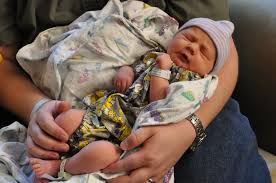
Study Reveals Increased Risk of Heart Defects in Babies Conceived Through Assisted Reproductive Technology
Babies conceived through assisted reproductive technology (ART) such as in vitro fertilization (IVF) have a significantly higher risk of being born with major heart defects, according to a recent study. The research, published in the journal Human Reproduction, found that this risk is 36% higher compared to babies conceived naturally, raising concerns among healthcare professionals and hopeful parents alike.
The study, led by Ulla-Britt Wennerholm, an adjunct professor of obstetrics and gynecology at the University of Gothenburg in Sweden, analyzed data from more than 7.7 million births across Denmark, Finland, Norway, and Sweden. The findings reveal that the overall incidence of congenital heart defects in babies conceived via ART was 1.84%, compared to 1.15% in those conceived naturally.
“Previous research shows that there are increased risks for babies conceived with the help of assisted reproductive technology,” Wennerholm noted. “These include preterm birth and low birth weight. We wanted to investigate whether the risk of heart defects was higher for babies born following assisted reproduction.”
The Influence of Multiple Births
The study’s findings also indicate that the risk is particularly pronounced in multiple births, which are more common in assisted reproduction procedures. For twins and triplets conceived through ART, the incidence of heart defects was 2.47%, compared to 1.62% for single births.
This is not the first time that ART has been linked to health complications in newborns. Previous studies have shown that babies conceived through techniques like IVF and sperm injection have a higher likelihood of preterm delivery and being born with low birth weight. However, the latest research is one of the most comprehensive studies to date, focusing specifically on congenital heart defects.
The team also considered other potential contributors to these health outcomes, such as maternal age, pre-existing health conditions like diabetes or heart disease, and lifestyle factors like smoking. Despite accounting for these variables, the study still found a markedly higher rate of heart defects among babies born through assisted reproduction.
Understanding the Underlying Causes
Wennerholm and her team are not yet certain why babies conceived through ART have a higher likelihood of congenital heart disease, but she suggested that there may be a common underlying factor linking parental infertility to these defects in offspring.
“The fact that the risk of heart defect is similar regardless of the type of assisted reproduction used may indicate that there is some common factor underlying infertility in parents and congenital heart disease in their babies,” Wennerholm explained in the journal news release.
This theory was echoed by Dr. Nathalie Auger of the University of Montreal, who co-authored an editorial accompanying the study. Auger pointed out that patients who seek ART treatments often have underlying health conditions that could influence both fertility and the likelihood of heart defects in their children.
“Patients who use assisted reproductive technology tend to differ from the general population,” she said. “These patients may have underlying morbidities that affect both fertility and the risk of heart defects.”
Implications for Clinical Practice and Public Health
With a growing number of couples turning to ART for family planning, Wennerholm believes that the study’s findings have significant implications for clinical practice and public health policy. Identifying which babies are at the highest risk for congenital heart defects can expedite diagnosis and intervention, improving long-term health outcomes for these children.
“More and more people are conceiving with the help of assisted reproductive technology, so we might expect to see increases in cases of congenital heart defects worldwide,” Wennerholm noted.
Despite the increased risk, Wennerholm emphasized that the absolute risk remains small. “We are talking about a difference of 1.84% versus 1.15%,” she pointed out, suggesting that prospective parents should be informed, but not alarmed, by the study’s results.
Looking Ahead
As ART continues to advance and more couples opt for these methods, ongoing research will be essential in understanding the full scope of its impact on child health. Meanwhile, healthcare providers should consider these findings when counseling parents-to-be and monitoring pregnancies resulting from ART.
The study serves as a crucial reminder of the need for individualized care and rigorous screening for families using assisted reproduction. By identifying potential risks early, healthcare providers can offer targeted interventions, thereby safeguarding the health of newborns conceived through these innovative, yet complex, reproductive technologies.